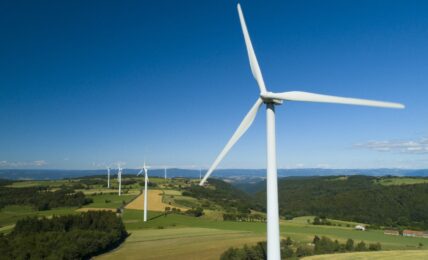Issuance volumes of green, social, sustainability and sustainability-linked (GSSS) bonds rebounded sharply in Q1 2024 over the prior quarter, rising 36% to $281 billion, up from $207 billion in Q4 2023, according to a new report from Moody’s Investors Service.
On a year-over-year basis, sustainable bond issuance rose marginally from $279 billion from its strong performance in Q1 2023, with volumes accounting for 12% of total global bond issuance in the quarter, down from 14% in 2023. Moody’s said that it is maintaining its full-year forecast for $950 billion GSSS bond issuance for 2024, up modestly over 2023.
Matthew Kuchtyak, VP-Sustainable Finance at Moody’s Ratings, said:
“Despite the strength of first-quarter sustainable bond volumes, we are maintaining our full-year 2024 sustainable bond issuance forecast of $950 billion as global macroeconomic conditions remain relatively soft.”
By bond type, green bonds continued to dominate the GSSS market at 60% of volumes, with issuance rising 26% quarter-over-quarter and 3% year-over-year to $169 billion, with strong performance from nonfinancial corporate issuers and sovereigns at $61 billion and $53 billion, respectively. For the full year, Moody’s anticipates continued strong green bond issuance, forecasting $580 billion, up slightly from 2023.
Social bonds rebounded in Q1 2024 to $48 billion, up 51% over the prior quarter, although Moody’s noted that the quarter included $13 billion in issuance from French public finance agency Caisse d’Amortissement de la Dette Sociale (CADES), and maintained its $150 billion full year forecast.
Sustainability bond issuance nearly doubled over the prior quarter to $55 billion, up 16% year-over-year, according to the report, with Moody’s continuing to anticipate full year volumes growing to $160 billion, “underpinned by a growing number of issuers seeking to finance both green and social projects.”
Despite the strength in most segments, however, sustainability-linked bond (SLB) issuance declined sharply in the quarter to $10 billion, down from $22 billion in the prior year quarter, marking the lowest quarter since Q1 2021. According to Moody’s potential SLB issuers continue to be discouraged by investor scrutiny over issues such as the credibility and robustness of the bonds’ linked sustainability targets. Moody’s maintained its $60 billion full year forecast for SLB issuance.
The report also highlighted key trends in the GSSS market, including the proliferation of green industrial policies and growing regulatory pressure on companies to decarbonize, particularly in hard-to-abate sectors, with transition finance contributing to an acceleration in green investments and in sustainable bond issuance. The report also noted the growth in issuance volumes from sovereign issuers, reaching its third-highest quarterly total to date at $59 billion in Q1 2024, with growth anticipated to continue over time as more countries use labeled bonds to finance their climate and sustainability ambitions.
Kuchtyak said:
“Although sustainable bond issuance accounted for the lowest quarterly share of global bond issuance since the beginning of 2022, we expect sustainable bonds to remain top of mind for issuers in many markets as climate finance needs, investment in emerging green technologies and market innovation support volumes this year.”



